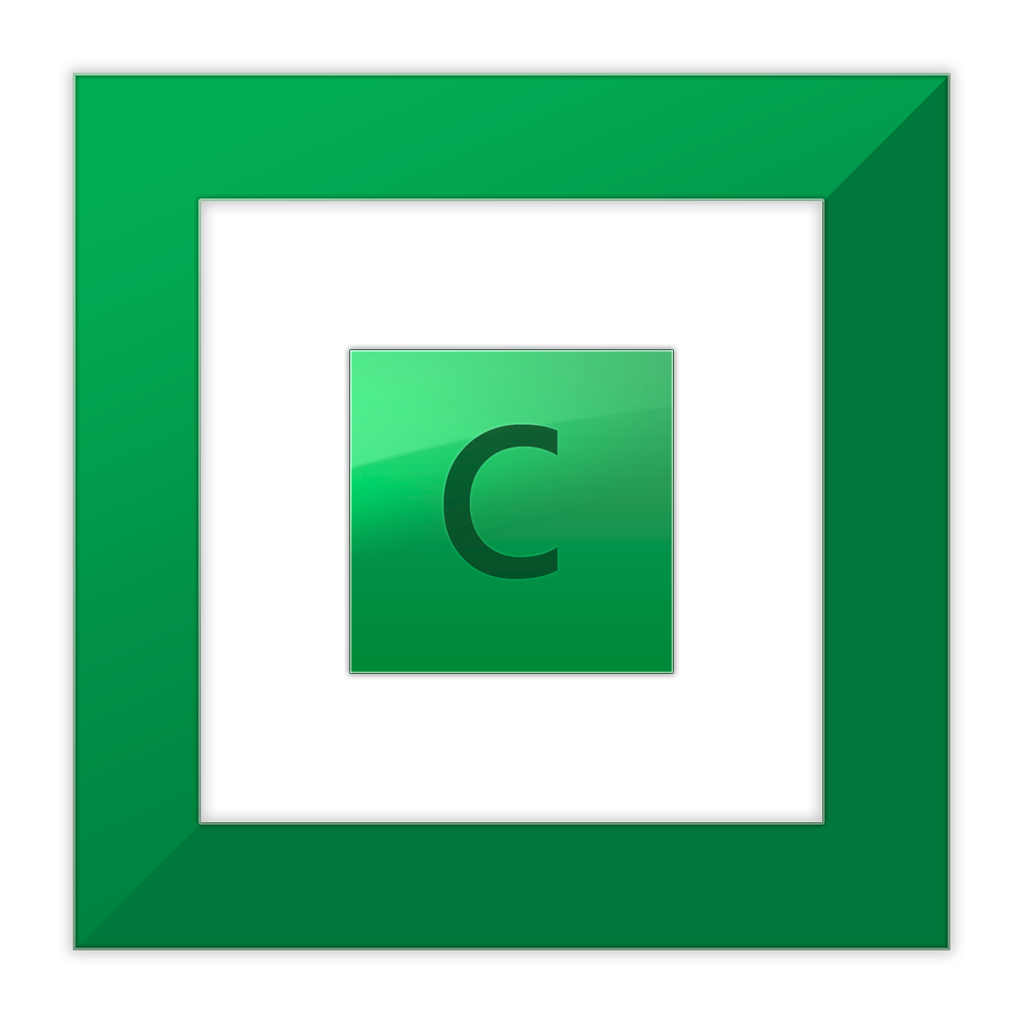StableBit DrivePool 2.0 build 230 is now out with some new additions to the Horizontal UI.

You can download the latest build here: http://stablebit.com/DrivePool/Download
Horizontal UI
To get into the horizontal UI mode, just stretch the window wide. In the horizontal UI mode, you’ll notice some new file distribution bars displayed under each disk. If you’ve ever used StableBit DrivePool 1.X, you may remember that we’ve had something similar to this in that version as well.
So what are these for, and what do they show?
The file distribution bars give you 3 pieces of information:
- How the files distributed on each disk, in terms of duplicated files vs. unduplicated files vs. unpooled files (and file system metadata).
- Whether the files will be redistributed on the next balancing pass, and how.
- Whether there are any new file placement limits, and for which disks.
Let’s go over each case with some screenshots.
File Distribution
File distribution is shown by displaying a bar below each disk. The bar shows file distribution as a percentage of the total disk size (just like Windows Explorer).
The bar is divided into a number of categories.
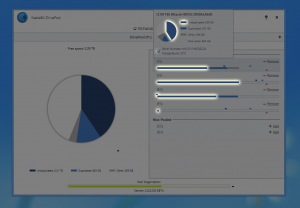
Unduplicated files are files that exist on the pool in an unduplicated state.
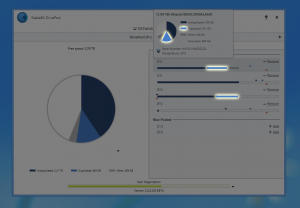
Duplicated files are files that exist on the pool, which are duplicated. Obviously, each duplicated file exists on 2 or more disks.

And then there’s “Other”. “Other” always confuses people, but it literally is everything else.
So what else is there?
- Non-pooled files that exist on that disk. Remember that just because a disk is part of the pool doesn’t mean that you can’t continue to use that disk to store non-pooled files.
- NTFS Metadata. For every file on a NTFS volume, there is additional metadata associated with that data stream, like the file name, file attributes, modification times, etc… These typically take very little disk space, but can add up if you have lots of files.
- Directory entries. On NTFS, directory entries are actually stored as regular files with a “directory” attribute. But instead of a data stream, they contain a little database of index entries for each file (and subdirectory) that exists under them.
- Slack space. Just because you have a 100GB volume, doesn’t mean that you can use all 100 Gigabytes of that volume to store data. NTFS divides your volume into equally sized chunks called clusters, which are typically 4096 bytes in size. If your file doesn’t fit neatly into these clusters then there’s going to be some space at the end of the file that’s wasted. We call this “slack space”.
Rebalance Markers
Above each file distribution bar you may have one or two rebalance markers displayed.

The rebalancing markers tell where DrivePool would prefer that the file distribution bars be, based on your balancing model.
In essence, these show you how DrivePool wants to reshuffle your files on the next balancing run.
There is a marker for duplicated files and unduplicated files, and if the rebalancing target is the same for both file types, they are combined into one.
You can hover your mouse over each rebalancing marker to see which file type it represents and how much data it wants to move.
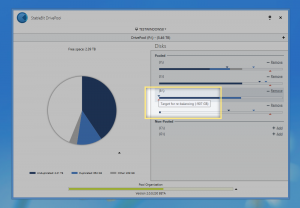
Balancers

You can tell DrivePool how to organize your files by opening up balancing settings. StableBit DrivePool comes with reasonable defaults, so you don’t ever have to change anything here unless you want to.
For example, in the above screenshot I’ve told DrivePool that I don’t want any pooled files placed on drive E:\, unless all of the other disks are 90 % full.
As soon as you click save, the rebalancing markers will reflect your settings.
Pool Organization
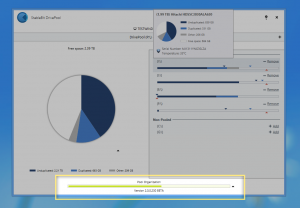
The pool organization bar is situated towards the bottom of the window and tells you how “organized” your pool is. It turns from green to yellow to red, as the pool organization gets worse.
Pool organization improves when the system rebalances the pool.
It’s calculated based on how close the file distribution bars are to the rebalancing markers.
File Placement Limit Markers
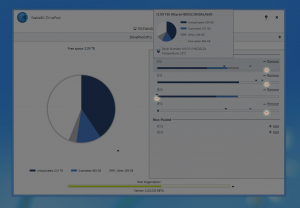
The file placement limit markers show you whether there are any limits placed on new file creation.
There can be a limit on unduplicated file creation, on duplicated file creation or both. So it’s possible to see more than one file placement limit marker per disk.
All this tells you is where new files will be placed when they are copied to the pool.
If there are no limits set, or all the limits are violated, then the disk with the most free space wins.
Remove Options
That covers all of the rebalancing UI changes in this build. Let’s look at disk removal options.
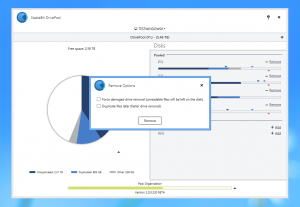
When you click the “Remove” link to remove a disk from the pool, you will now be presented with these new disk removal options. Once again, DrivePool 1.X users will recognize these.
Force Damaged Drive Removal
Normally, StableBit DrivePool will not remove a drive from the pool, unless it can copy every single unduplicated file off of that disk onto some other disk in the pool. This of course makes sense, because you wouldn’t want any of your pooled files to disappear after removing a disk from the pool.
But this can be problematic when the disk that you’re removing is damaged, and some files on it are already unreadable. In this case, the removal process will be aborted with an error, and you will not be able to remove the disk from the pool.
However, with this new option enabled, DrivePool will continue to remove the disk, even though it may not be able to copy every single file off of that disk. The uncopied files will remain on the damaged disk in the (now no longer hidden) “PoolPart” folder.
Duplicate Files Later
This option is geared towards people who make extensive use of file duplication to protect their data.
When removing a disk from a pool that has duplicated files, for every duplicated file encountered, DrivePool will normally make a copy of that file onto some other disk in the pool. This ensures duplication consistency at all times, but can be time consuming.
With “Duplicate files later” enabled, DrivePool will simply skip all duplicated files on the disk being removed. If the disk only contains duplicated files, disk removal now becomes very fast.
After the disk is removed, DrivePool will reduplicate any unduplicated files in the background.
What’s Next?
That’s it for the new stuff in this build. We’ll probably see some real-time performance and pool usage statistics in the next UI update.
